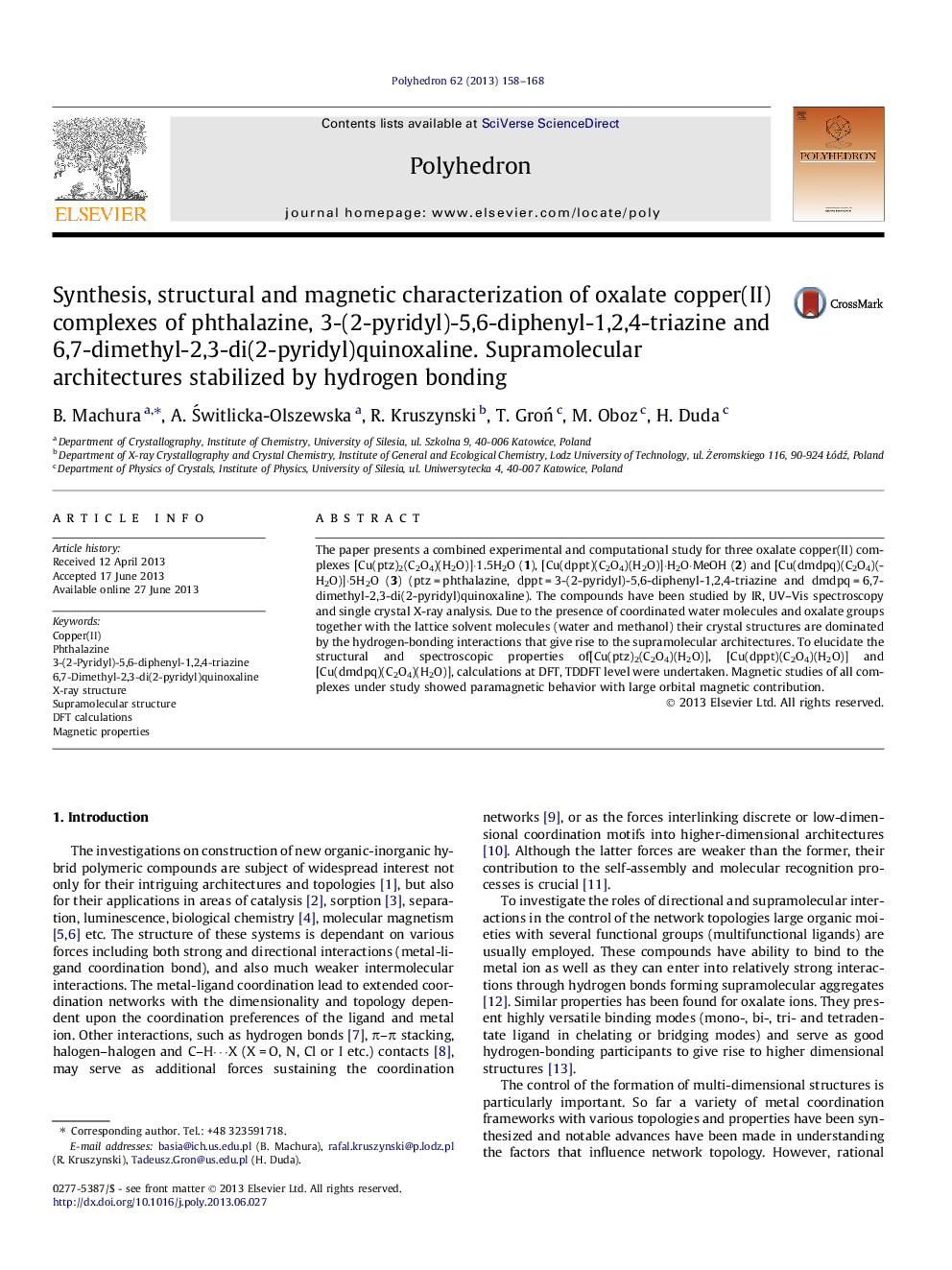| Article ID | Journal | Published Year | Pages | File Type |
|---|---|---|---|---|
| 1337202 | Polyhedron | 2013 | 11 Pages |
The paper presents a combined experimental and computational study for three oxalate copper(II) complexes [Cu(ptz)2(C2O4)(H2O)]·1.5H2O (1), [Cu(dppt)(C2O4)(H2O)]·H2O·MeOH (2) and [Cu(dmdpq)(C2O4)(H2O)]·5H2O (3) (ptz = phthalazine, dppt = 3-(2-pyridyl)-5,6-diphenyl-1,2,4-triazine and dmdpq = 6,7-dimethyl-2,3-di(2-pyridyl)quinoxaline). The compounds have been studied by IR, UV–Vis spectroscopy and single crystal X-ray analysis. Due to the presence of coordinated water molecules and oxalate groups together with the lattice solvent molecules (water and methanol) their crystal structures are dominated by the hydrogen-bonding interactions that give rise to the supramolecular architectures. To elucidate the structural and spectroscopic properties of[Cu(ptz)2(C2O4)(H2O)], [Cu(dppt)(C2O4)(H2O)] and [Cu(dmdpq)(C2O4)(H2O)], calculations at DFT, TDDFT level were undertaken. Magnetic studies of all complexes under study showed paramagnetic behavior with large orbital magnetic contribution.
Graphical abstractThe paper presents a combined experimental and computational study for three oxalate copper(II) complexes [Cu(ptz)2(C2O4)(H2O)]·1.5H2O (1), [Cu(dppt)(C2O4)(H2O)]·H2O·MeOH (2) and [Cu(dmdpq)(C2O4)(H2O)]·5H2O (3) (ptz = phthalazine, dppt = 3-(2-pyridyl)-5,6-diphenyl-1,2,4-triazine and dmdpq = 6,7-dimethyl-2,3-di(2-pyridyl)quinoxaline). The compounds have been studied by IR, UV–Vis spectroscopy and single crystal X-ray analysis. Due to the presence of coordinated water molecules and oxalate groups together with the lattice solvent molecules (water and methanol) their crystal structures are dominated by the hydrogen-bonding interactions that give rise to the supramolecular architectures. The electronic spectra of the complexes [Cu(ptz)2(C2O4)(rH2O)], [Cu(dppt)(C2O4)(H2O)] and [Cu(dmdpq)(C2O4)(H2O)] were analyzed and the absorptions bands were assigned through the DFT/TDDFT procedures. Magnetic studies of all complexes under study showed paramagnetic behavior with large orbital magnetic contribution.Figure optionsDownload full-size imageDownload as PowerPoint slide
